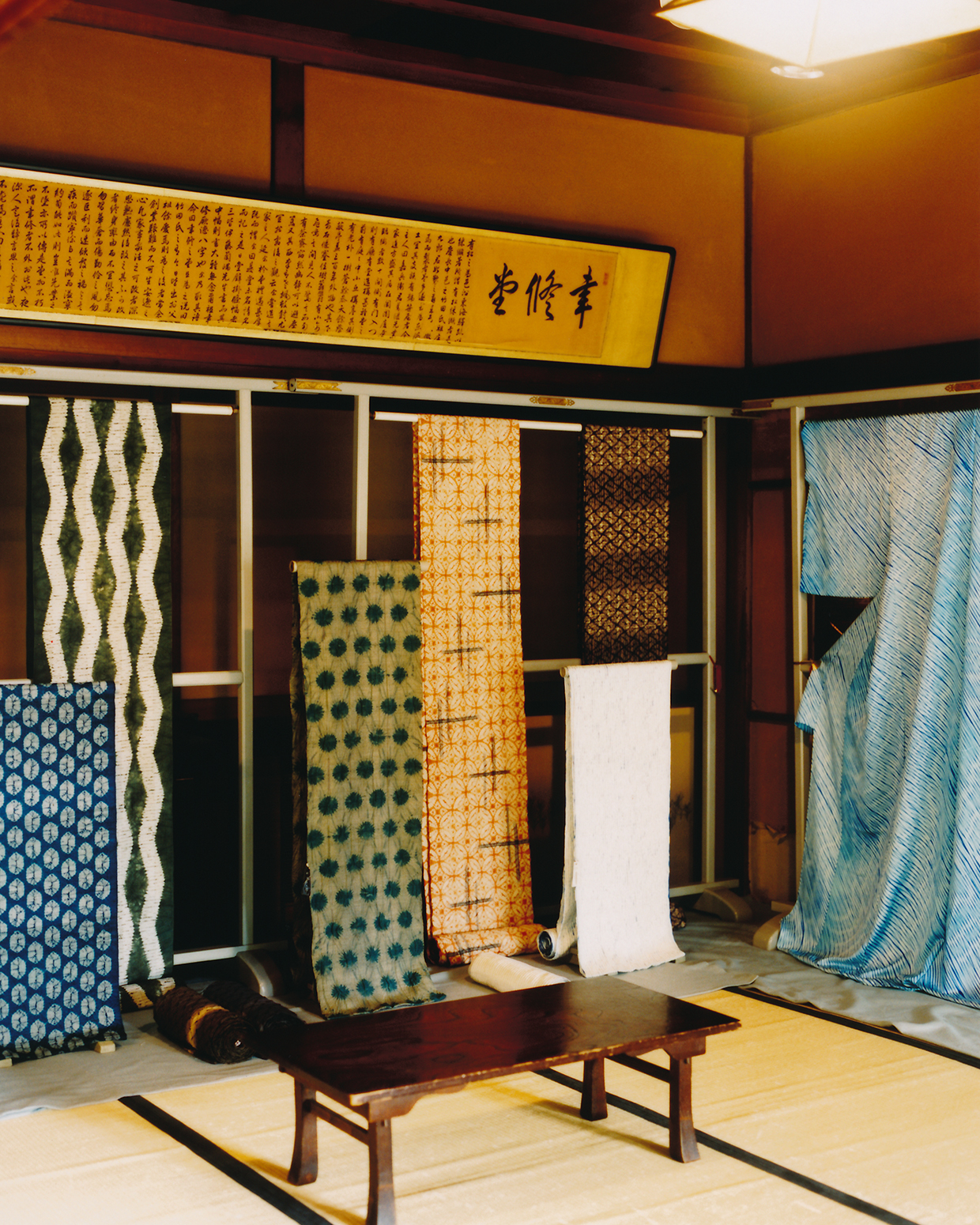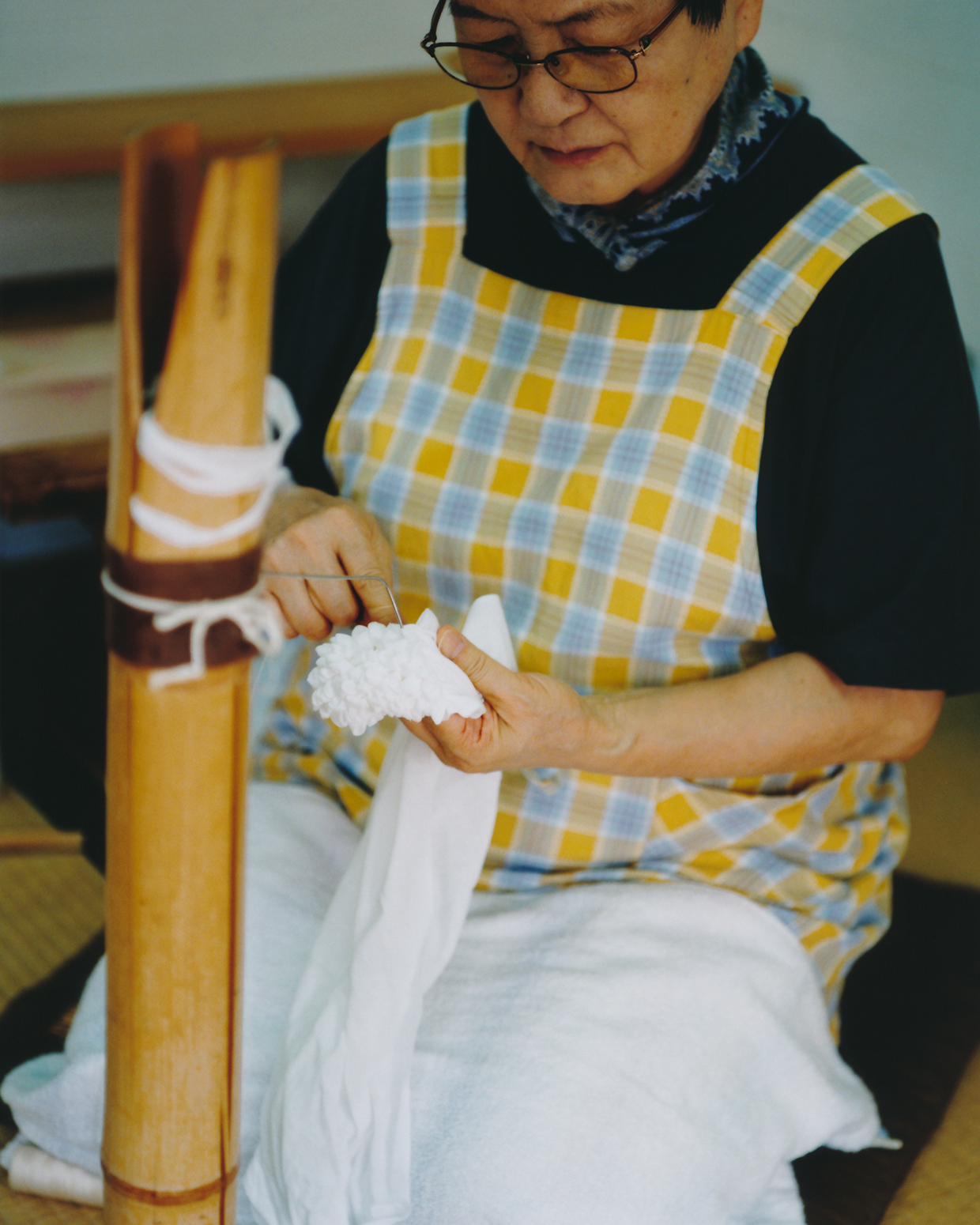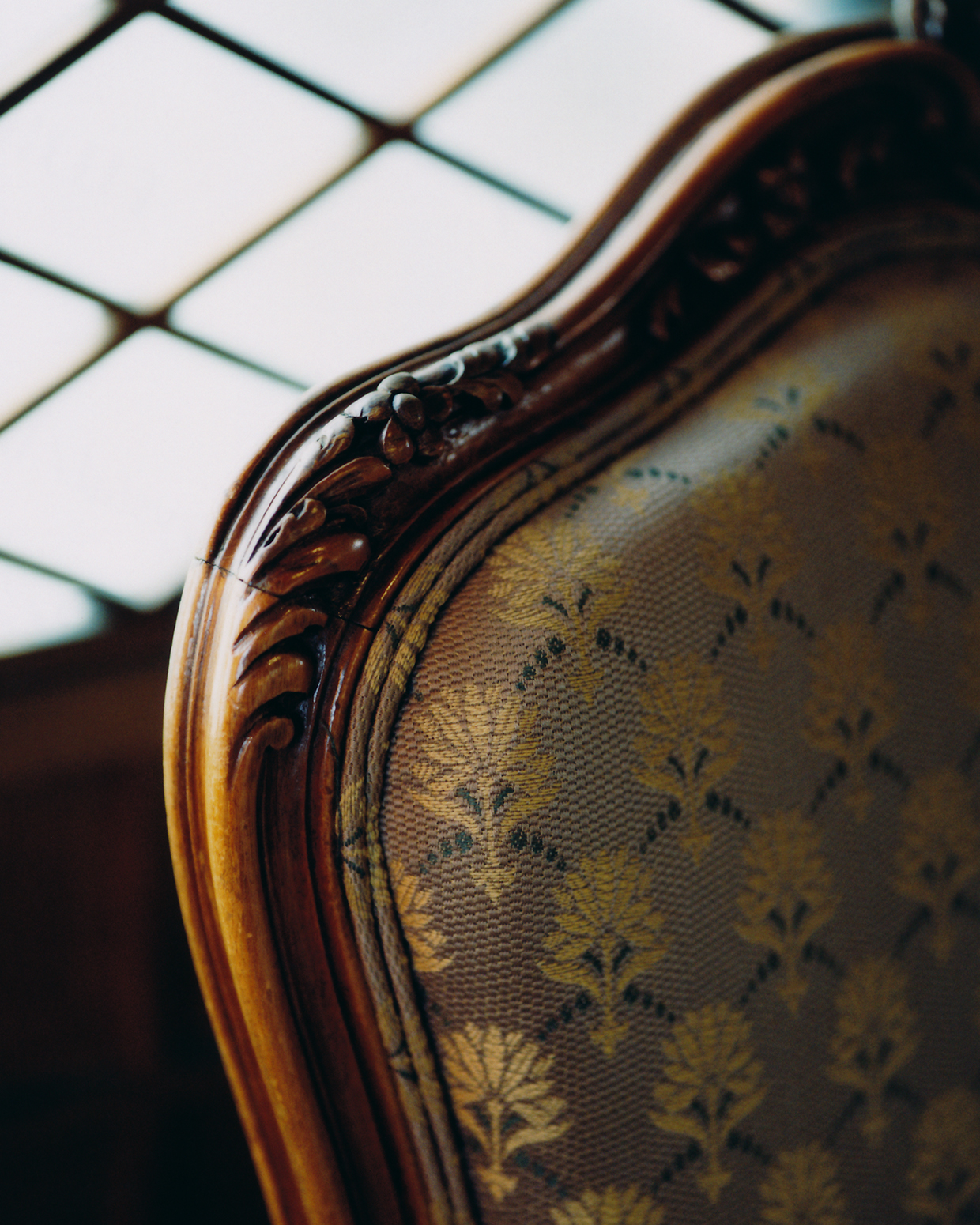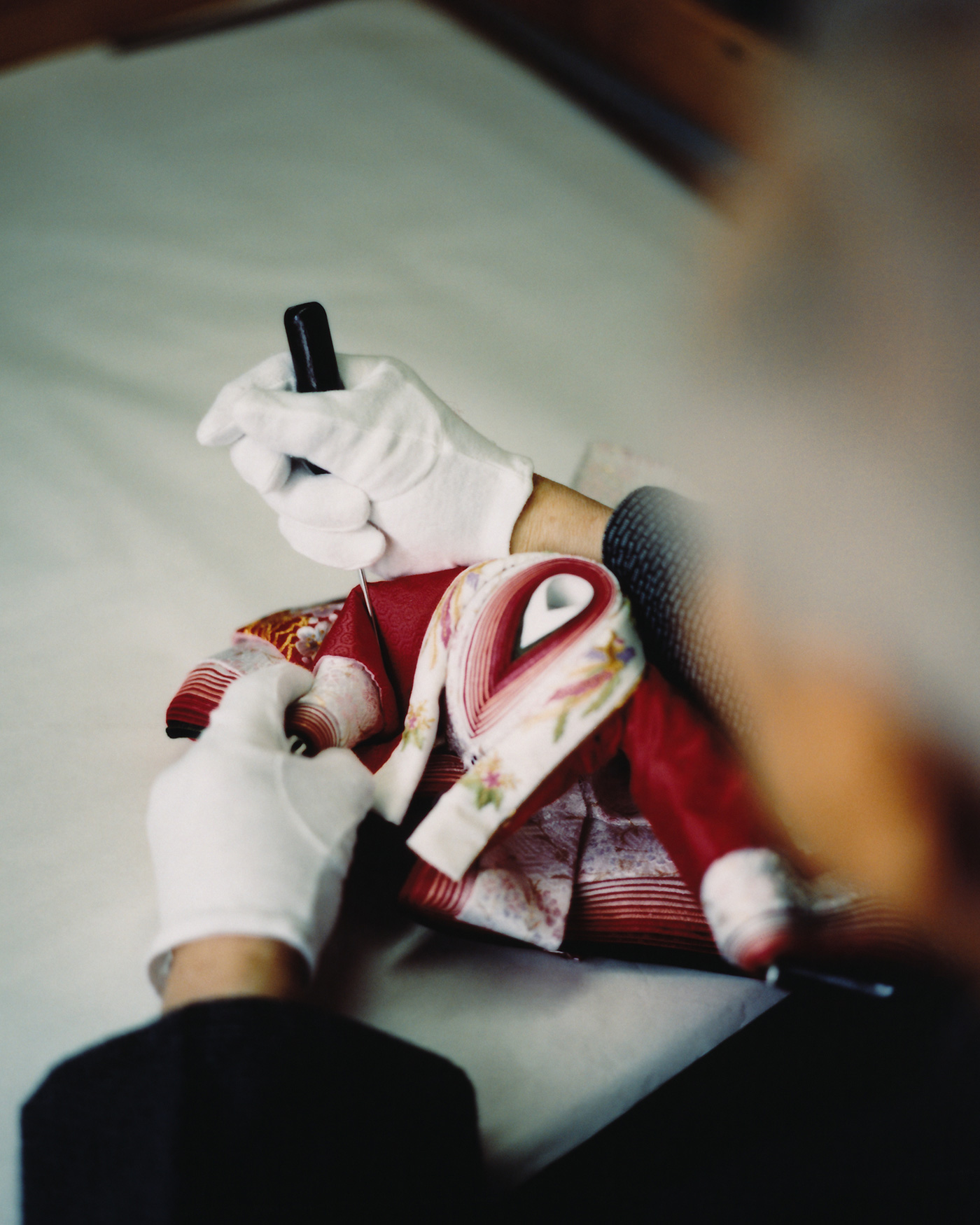One of the characteristic features of Arimatsu-Narumi shibori is that the two techniques of “shibori” and “dyeing” are crossed on a single piece of cloth. There are more than 100 different shibori patterns in Arimatsu-Narumi shibori, but not all artisans have the skills to create 100 different patterns. Are there some patterns that cannot be reproduced today?
Yes, we do. At its peak in the Edo period, there were about 150 different patterns. But now there are at most 20 to 30 types. The number is decreasing every year due to the aging of craftsmen. As for the tradition, we are now making efforts to foster it so that it will not be lost.
The union teaches more than 10 people a year. It takes five years to learn. Our chairman is leading the program, and about 30 people have already graduated. According to the chairman, he wants to train about 70 people, so we are training them, but it remains to be seen if they will actually lead to jobs. The worst thing that can happen is to train artisans but not be able to produce work. Therefore, we have to keep providing them with work. But we have yet to have them work on kimono materials.

I see. Does that mean it is difficult to squeeze kimono fabric?
I think it’s difficult. The fabric is long, isn’t it? I’m thinking that I have to give them the kimono fabric and ask them to do it next, because I’ve found someone who can do the yukata a bit nicely. But you know, the strength of the fabric is completely different. Stiff silk fabrics are difficult to work with, so there is a high probability of failure. Even so, if we don’t give them the fabric and let them try, it won’t lead to the next step, so we are now working to create a solid system for training and providing guidance.
It costs a lot to train artisans, doesn’t it?
Yes, it does. It costs a certain amount of money. That is why it is necessary to reflect that in the value. I think all traditional industry production areas have the same problem, but if the craftsmen can’t make a living, no matter how much they are trained…. We have to make an effort to raise the wages of our craftsmen. This will be reflected in the final sales price, but we are now thinking about how we can sell our products at a higher price.

In the past, we thought about how much we could reduce costs and distribute our products at a low price, and that is why we sent our work overseas and it didn’t go so well. I would like to raise the value of handicrafts. The amount of production is limited, and if craftspeople cannot make a living from their work, the number of craftspeople will decrease.
There are many people who want to do this work. They want to do it, but in the end there is not enough work. Young people want to work, but they need money to raise their children, so if they can’t continue working, they can’t make a living. But we have to bring them up to that level.
Is the entire town of Arimatsu involved in the training of such young people and the creation of value?
These ideals are shared in the community as well. Everyone thinks so, but there are still expectations for our company. I often talk with the chairman about how we need to take the lead and do whatever it takes. I often talk with the chairman about how we need to take the lead and do whatever it takes to make Arimatsu a pleasant place to live, but since Arimatsu originally reigned supreme, I suggest that we create a system in which the entire town takes the lead, just like in the past. So I am encouraging them to take the risk and do so. Personally, I am thinking of doing shibori myself. I tell the president that he should do shibori too. No one in the Takeda family has actually done shibori before, so it’s interesting. It would be interesting to have a member of the Takeda family do shibori himself. That is what I am trying to encourage.

How many employees do you have now?
In total, I would say there are about 15 people. We don’t have any young people; I’d say the younger ones are in their 40s. I would like to hire new people. I’m trying my best to talk to the chairman about that right now. It’s difficult because of the balance of funds, but human resources are important, and we want to keep doing new things, so we need to bring in new people within a few years to do so.
Even I am already on the older side, having been with the company for 27 years. I would like to bring in young people in their 20s and 30s to expand the possibilities. Because drawing is a secondary process, the possibilities are endless, and anything is possible. So, I think it can be further developed with new, soft heads and techniques. That’s what I’m kind of hoping for.
In the 400-year history of Kahei Takeda, did you ever manufacture in-house?
No. For 400 years, Takeda Kahei Shoten has always been committed to providing work to artisans. We don’t think in terms of one company, Takeda Kahei Shoten, but in terms of the entire town. If we alone had a monopoly and did everything in order, I think we would make a good profit. But I want to cherish the 400 years of history that the entire town has built up as a community.








